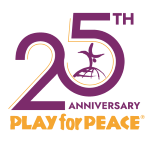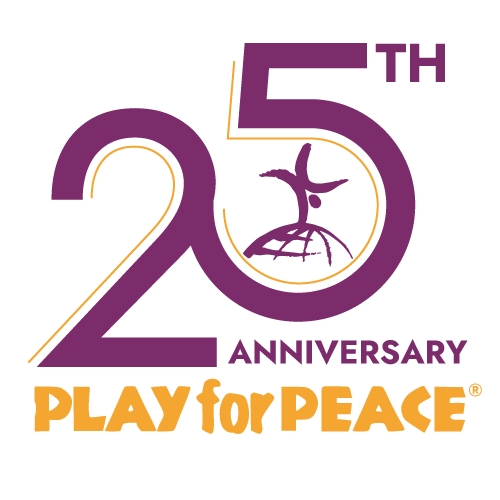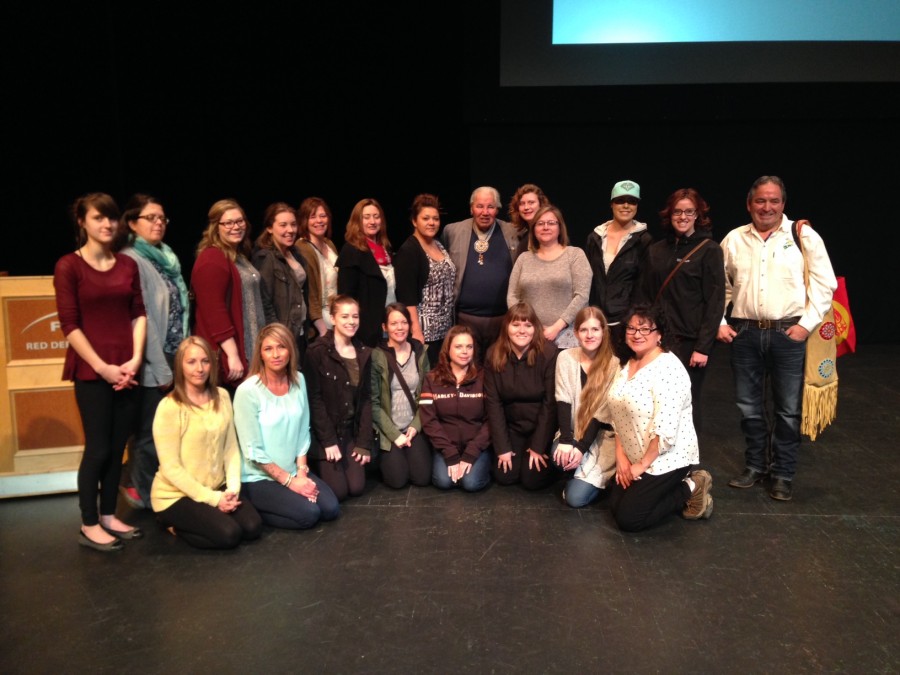"It is important to the victims that they are given this opportunity to speak and have their stories heard, so they can start to heal." - Play for Peace volunteer Amanda Cook
Play for Peace volunteer Amanda Cook lives in Alberta, Canada, and she provides this story about Canada's efforts to hear the stories of and provide reconciliation for the hundreds of thousands of First Nations (aboriginal) children, who were forced to attend residential schools, from which many never returned. She shares this piece to help us understand an important issue in Canada and the purpose of the Truth and Reconciliation Commission.
Recently, I had the opportunity to attend a presentation at the Red Deer College where a recent appointee to the Canadian Senate Justice Murray Sinclair, of the Truth and Reconciliation Commission of Canada, was a keynote speaker. Although many of us in the crowd were familiar with the work of the commission, Sinclair still took the time to explain how the commission came to be, what their work entailed, and the struggles they faced in compiling the report. Sinclair showed us a video account from a Residential School survivor on the horrors he had faced during his years in school. He had memories of being stolen from his bed in the middle of the night and carried shame for decades from the assaults he experienced. Sinclair took the audience through a quick run-down of the monstrous assimilation processes experienced by First Nations children, including the poor living conditions and physical and sexual abuses that occurred at the schools. Sinclair also did a great job of explaining how those traumas have overflowed into traumatized individuals, individuals who have not been able to reintegrate into family life and healthy emotional relationships. He spoke in detail about how that generation of First Nations individuals, families, and communities now have been affected by these atrocities. Having already learned about the truth of the Residential Schools and the lies spewed by the Canadian Government in their attempt to cover up cultural genocide, it wasn’t the facts of the history that struck a chord with me that day. Two things that stood out for me from his presentation were both during the Q&A portion of the event. The first one was from a young aboriginal man, who had been disconnected from his ancestral history. He was finally just making the connections to the reality of his own life. He said that in learning about what happened at Residential Schools he finally understood why his grandparents were the way they were, why his parents are the way they are, and even why it is that he and his wife are struggling today. The emotion could be heard in his voice, which was felt throughout the entire room, as he asked Sinclair what he needed to do to heal so his children didn’t have to repeat the trauma. Sinclair informed the young man that each healing journey would be different, depending on what parts had been broken but now that he knew the truth, the truth about who he was and where he came from that the healing could at least start. Sinclair mentioned that flowers also helped. Sinclair mentioned that he gave a lot of flowers to his wife, which had always helped, and he encouraged the man to start the healing with a conversation about what he learned that day. The next question from the crowd was a young lady who asked what she could do to do her part in facilitating the reconciliation. Sinclair referred her back to the “Call to Action” section of the Truth and Reconciliation.
Letting the young lady know that whatever her future career was, it was her responsibility to find out her “Call to Action” and to change the current stigma and biases within that profession, as it relates to First Nations. He also responded with an analogy that I liked. He compared these next steps in the reconciliation process to scrambling to climb out of a deep hole. How do you know if where you dig your hands and feet will support you as you try to climb out? He answered that, until you try, you simply don’t know. These steps have never before been taken here in Canada, so we will all have to learn together. If it doesn’t work and the ground gives away, you don’t stay in the bottom of the hole, you find another spot to dig your hands and feet in and you try again. As a future social worker, that day was a great learning experience. As horrible as it is to hear these painful stories again and again, we must listen. It is important to the victims, that they are given this opportunity to speak and have their stories heard so they can start to heal. It’s important for me to listen because to become an effective social worker, I must first know and fully understand their pain. Only then can I be an effective part of the healing journey?
Lifting Lives is a new blog series by Play for Peace, in which we explore issues that affect children and youth in the countries where our Play for Peace Clubs operate. Play for Peace mentors and trainers often work with children who are affected by a variety of pressing issues in their communities and in their countries. Our work to create freedom from fear for every child is inspired by them.



